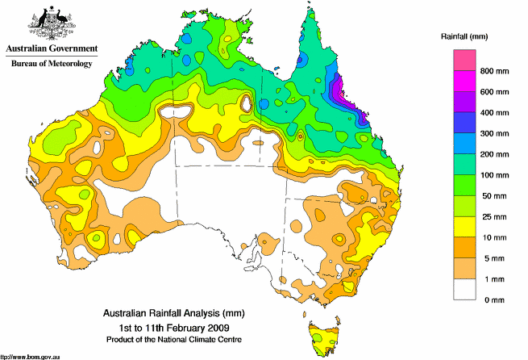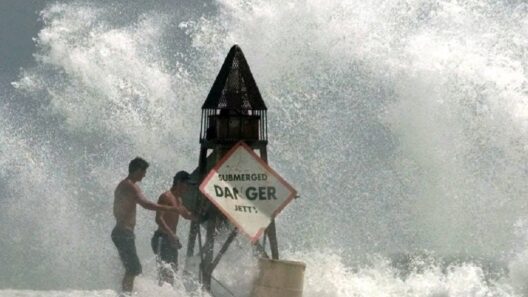Sea level rise is an alarming phenomenon that threatens coastal ecosystems, human habitation, and global economies. As the planet warms, polar ice melts and ocean waters expand, leading to significantly higher sea levels. This development poses multifaceted risks that are paramount to understanding as we navigate the complexities of climate change. This article will explore the implications of rising sea levels, examining environmental degradation, social displacement, and economic ramifications.
Understanding the primary causes of rising sea levels is crucial in grasping their impacts. Two main elements contribute: thermal expansion of seawater and the melting of glaciers and ice sheets. As global temperatures rise, seawater absorbs heat and expands. Concurrently, immense ice masses, particularly in Greenland and Antarctica, are in a state of accelerated melt, releasing freshwater into the oceans. Together, these processes disrupt established marine and terrestrial ecosystems, lead to unprecedented flooding, and create a myriad of secondary consequences.
The ramifications of rising sea levels are not isolated to any single aspect; they touch every facet of life along coastlines and beyond. This necessitates a holistic view of the risks involved.
Environmental Degradation: The Unraveling of Coastal Ecosystems
Coastal ecosystems, including wetlands, mangroves, and coral reefs, serve as critical buffers against flooding and natural storm surges. They foster biodiversity, support fisheries, and provide crucial services for human populations. However, as sea levels rise, the salinity of these ecosystems changes. Saltwater intrusion into freshwater sources disrupts aquatic life and diminishes the viability of agriculture in surrounding areas. The delicate balance within these habitats is disrupted, leading to species extinctions and the loss of vital ecological functions.
The loss of wetlands and coastal forests exacerbates the frequency and severity of storm surges. For instance, storms that would have once encountered significant resistance from mangrove forests now have an unobstructed path toward the coast. This vicious cycle leads to more severe damage to human infrastructure during extreme weather events and further detracts from the resilience of natural habitats.
Social Displacement: The Human Toll of Rising Waters
Perhaps one of the most immediate and distressing effects of rising sea levels is the potential for widespread social displacement. Coastal cities are home to millions, and as these areas become increasingly inhospitable, the specter of forced migration looms ominously. The United Nations estimates that by 2050, up to 200 million people could be forcibly displaced due to rising sea levels.
Such migration creates complex social challenges. Often, displaced individuals seek refuge in urban centers, leading to overcrowding and straining local resources and infrastructures. In areas already experiencing economic difficulties, this influx can ignite tensions and fuel resentment between newcomers and established residents. The tenets of social justice become increasingly complicated as vulnerable populations—often those least responsible for climate change—bear the brunt of its consequences.
Moreover, entire nations risk losing territory, altering geopolitical dynamics. Countries like the Maldives and Tuvalu may find themselves submerged, rendering them unable to sustain their populations. The disappearance of these nations threatens to create stateless people and calls into question issues of sovereignty, human rights, and international law.
Economic Ramifications: Quantifying the Costs of Inaction
The financial implications of rising sea levels are staggering. Coastal infrastructures, including roads, bridges, and energy plants, face increased risks from flooding and erosion. The Rehabilitation costs will amount to billions as cities grapple with the need for seawalls, levees, and drainage systems to contend with new realities.
Insurance markets, too, are profoundly impacted. As areas become increasingly prone to flooding, insurers may either raise premiums or withdraw coverage altogether, making homes unaffordable for many. The real estate market faces disruption as property values in at-risk coastal areas plummet, leading to financial crises for homeowners and municipalities reliant on property taxes for funding essential services.
Furthermore, the fishing industry, which many coastal economies depend on, will suffer as fish populations shift due to changing water temperatures and salinity levels. This presents ripple effects, threatening food security and livelihoods. The long-term sustainability of these economies hangs in the balance as climate projections indicate that current trends will only worsen over time.
Mitigation Strategies: Preparing for the Inevitable
Understanding the risks of rising sea levels is crucial, but a proactive approach to mitigation and adaptation is equally essential. Communities must invest in resilient infrastructure, promote sustainable land use, and prioritize the conservation of coastal ecosystems. Reforestation efforts and improved urban planning can help minimize the human and ecological toll of rising waters.
Local, national, and international cooperation will be vital in addressing this global challenge. Comprehensive climate policies that focus on reducing greenhouse gas emissions, enhancing renewable energy sources, and protecting vulnerable communities can lay foundations for more resilient futures. The urgency of the current situation demands swift and decisive action to mitigate the impending hazards of rising sea levels.
In conclusion, the implications of rising sea levels are far-reaching and multi-dimensional. From environmental degradation to social displacement and economic ramifications, the challenges we face are formidable yet not insurmountable. As stewards of the planet, it is our responsibility to confront these realities and develop effective strategies to safeguard our communities, ecosystems, and future generations from the impending threats of this critical issue.







